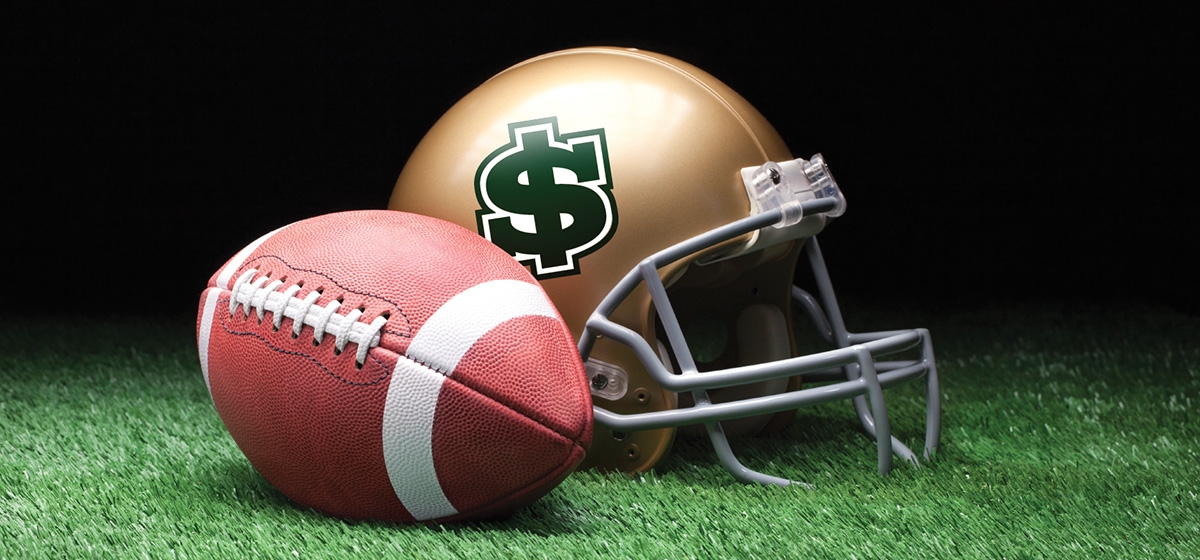
Every year at this time, as college football arrives, I’m reminded of an old movie that pops up on the classic channels now and then—“The Male Animal.” The tale deals with the two principal functions of the American college: education and football. In that order. Usually.
The movie, from the 1940s, is based on a play by James Thurber and Elliott Nugent. It’s been described as a comedic drama by some critics who must have missed the best part. It has its funny moments, and there is drama, but it’s actually a ripping good satire loaded with savage barbs wrapped in Thurber whimsy.
The story: This preciously naïve English professor blunders into a crisis when he decides to take a stand for free speech and academic freedom. Faced with such ideas, the trustees are set to fire him. To complicate the situation, a buffoonish former football hero—the boyfriend of the professor’s gullible wife back in his glory days—returns for that holiest of college times, Homecoming, and the Homecoming game. It’s what college football is all about, even to this day—the crackle of autumn leaves, tears singing the alma mater, dancing cheerleaders, prancing drum majors and seas of marching bands.
But hold that picture. We’d better enjoy the 2014 season. It could be the last of college football as we know and love it. And maybe not just football. There are forces out there now that could change all of college sports, and could even wreck the National Collegiate Athletic Association (NCAA), which rules intercollegiate athletics.
The recent reading scandal—or non-reading scandal—at the University of North Carolina merely stirred a simmering pot; the real broadside hit in April. Northwestern University football players took a vote on whether to form a union, and all of American collegiate sports took a deep breath and held it. A union would be the first step toward getting paid. The bedrock of college sports is that the athletes are amateurs. They do not get paid. If Northwestern unionized, might that not trigger a stampede? The NCAA is looking into a deep hole.
For those with an appetite for irony, the Northwestern voting episode was a feast. The players went to the polls knowing that just a few weeks earlier, an Ohio State wrestler won a national championship and received a trophy, while Athletic Director Gene Smith got an $18,000 bonus. In fact, Smith can get up to $250,000 in bonuses to go with his $1 million salary. ADs at big-time schools routinely get bonuses, including Pitt’s Steve Pederson, West Virginia’s Oliver Luck and Penn State’s newly hired Sandy Barbour.
The NCAA had barely caught its breath after the Northwestern vote when the Ed O’Bannon suit, filed in 2009, came to trial in June. O’Bannon, a former UCLA basketball star, was the lead plaintiff challenging the NCAA’s use of athletes’ likenesses for commercial purposes—in video games, for example—without their permission and without paying them. How big a deal is this one? Well, co-defendants EA Sports, which produces video games, and the Collegiate Licensing Company bailed out of the suit with a $40 million settlement. At stake for the NCAA: billions in TV revenues and licensing fees.
Well, back to the sanity of football. Most of us couldn’t wait for the 2014 season, but in the Big 10—with its 14 teams—they can’t wait for 2017. That’s when the new TV deal arrives, and projections show that it could mean $44.5 million. Per team. Per year.
So back to “The Male Animal” and the 1940s, where we have a meek professor about to get fired for his academic integrity and lose his wife to a bumptious ex-jock. It all seemed so simple back then.


